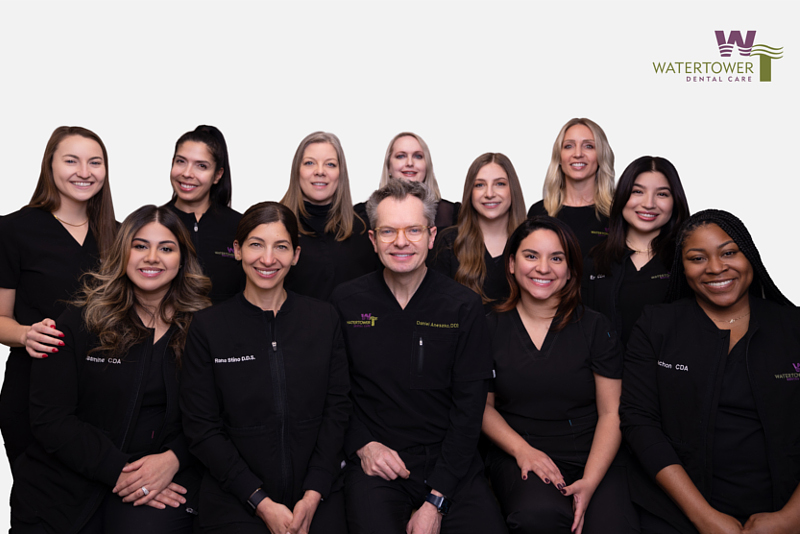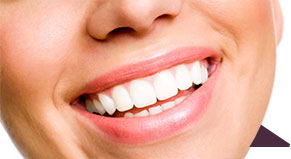Busting 6 Common Dental Myths
August 14th, 2014
 Dental myths and misconceptions are often a troublesome issue due to the worry and lack of care they can cause. Today, we’d like to bust a few of the common dental myths that we hear most often.
Dental myths and misconceptions are often a troublesome issue due to the worry and lack of care they can cause. Today, we’d like to bust a few of the common dental myths that we hear most often.
MYTH: You Should Brush Your Teeth Immediately After a Meal.
FACT: It’s better to wait thirty minutes after eating to brush your teeth. Many foods, including citrus fruits, candy, and starches, create acid that stick to your teeth and gums. This acid wears away the enamel on your teeth and helps feed bacteria to form plaque and tartar. While it may seem logical to brush immediately, in reality, your body has natural processes including salivation that help wash away these acids. Brushing your teeth immediately after eating can have negative effects. Using the toothbrush creates an abrasive surface and works the acids into your teeth more than you need. It’s better to wait for your saliva to do its job, drink lots of water, and brush your teeth thirty minutes to an hour after you eat.
MYTH: Sugary Candy is the Worst Food for Your Teeth.
FACT: While candy might be a cavity causer, foods such as potato chips and crackers, which are still high in sugar but also stick to the teeth and gums, can be more harmful. Most candy simply dissolves, and your saliva is able to wash away the majority of the acidic sugars. With crackers and similar foods, the sugars can stick around in your teeth much longer.
MYTH: The More Sugar You Eat, The Worse Your Teeth Will Be.
FACT: Sugar is found in most food, including bread, fruit, candy, juices, and more. As a result, it is hard to specifically blame poor oral hygiene on eating sugar. We often learn that candy and sugar cause cavities. Yet, you can still have healthy teeth if you eat sugar as long as you practice proper oral hygiene.
Sugar helps cause cavities by giving other bacteria food to eat to produce more acid that then eat away at your teeth. So, if you wash out your mouth with water and brush often, the sugars you consume should not harm your teeth.
MYTH: Baby Teeth Don’t Matter.
FACT: Baby teeth are just as important as adult teeth and should be treated as such. Sure, your child’s baby teeth will fall out eventually, but that doesn’t mean they don’t hold an important role in the future of your child’s oral hygiene. Baby teeth serve as placeholders as a child’s mouth develops, helping maintain the structure of the mouth and jaw, along with creating the proper space for their adult teeth when they grow in. Teaching your child oral hygiene at an early age also helps them to understand the importance of brushing twice a day to keep their teeth and gums healthy.
MYTH: You Should Avoid Brushing/Flossing if it Causes Your Gums to Bleed.
FACT: Bleeding gums is a sign of bad oral hygiene and a symptom of gum disease. If your gums begin to bleed during brushing or flossing your teeth, it means you need to be working harder at keeping your teeth and gums healthy. Often, bleeding gums is a sign that your gums are inflamed from an over-exposure to bacteria and plaque. Use a soft bristled toothbrush and perform gentle flossing daily and the bleeding will eventually stop.
MYTH: You’ll Know When You Have a Cavity.
This is a dangerous myth to believe because it can cause you a lot of pain in the future. Most cavities can not be felt right away. If you’re feeling pain in your mouth, it’s most likely that your cavity has reached a nerve ending in your mouth. This is a bad sign and requires the immediate attention of a dental professional. It’s best to visit your dentist every six months to catch cavities in their early stages to help prevent unnecessary pain and dental procedures.
There are plenty of dental myths to go around, and it is important to understand, that whatever the myth, often the most obvious solution is to continue to practice proper oral hygiene everyday, and do your best to keep your mouth free of bacteria and plaque. Visiting your dentist every six months for a cleaning will also help keep your teeth looking and feeling great. For more questions, contact Water Tower Dental. We’re happy to answer all of your questions and bust any other myths you might come across.

 Cavities are a major concern of any mouth, but it can be hard to know if you have one or not without a trip to the dentist. Luckily there are plenty of signs and symptoms that can help indicate that you might have a cavity in your mouth.
Cavities are a major concern of any mouth, but it can be hard to know if you have one or not without a trip to the dentist. Luckily there are plenty of signs and symptoms that can help indicate that you might have a cavity in your mouth. Next to brushing, flossing your teeth is the most important daily practice for great oral health. It helps scrape the plaque off the sides of your teeth and remove harmful bacteria from your gums. However, many of us make common mistakes that keep us from doing the best floss job possible. Thankfully, all of these mistakes are easily fixable, and after a short read, you can better your technique and ensure healthy gums and shining teeth.
Next to brushing, flossing your teeth is the most important daily practice for great oral health. It helps scrape the plaque off the sides of your teeth and remove harmful bacteria from your gums. However, many of us make common mistakes that keep us from doing the best floss job possible. Thankfully, all of these mistakes are easily fixable, and after a short read, you can better your technique and ensure healthy gums and shining teeth.





 Website Powered by Sesame 24-7™
Website Powered by Sesame 24-7™